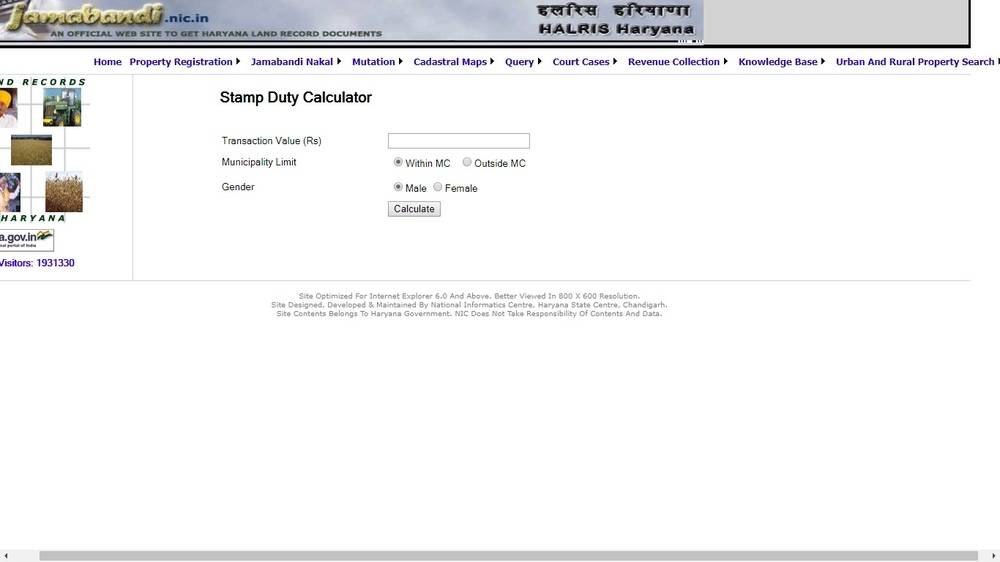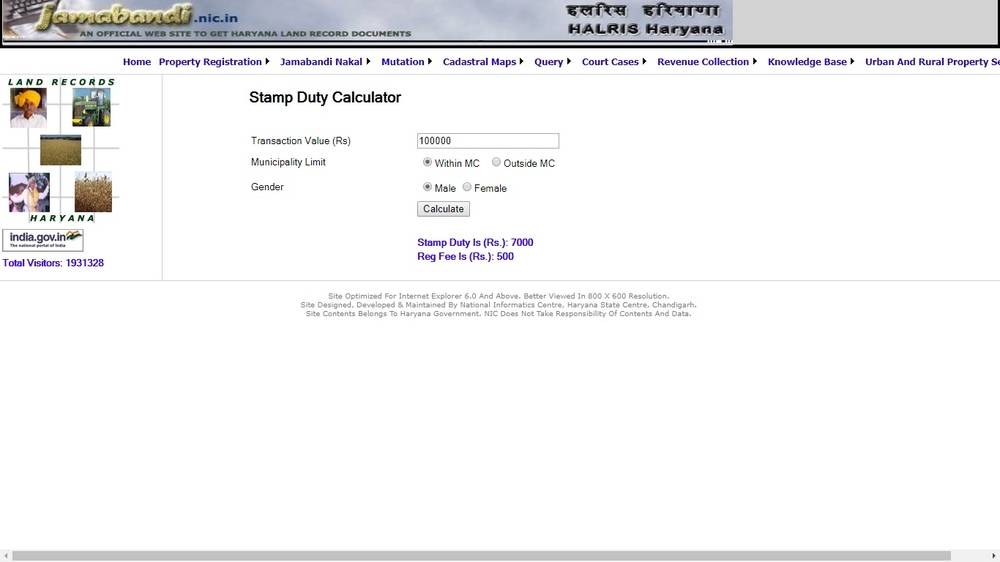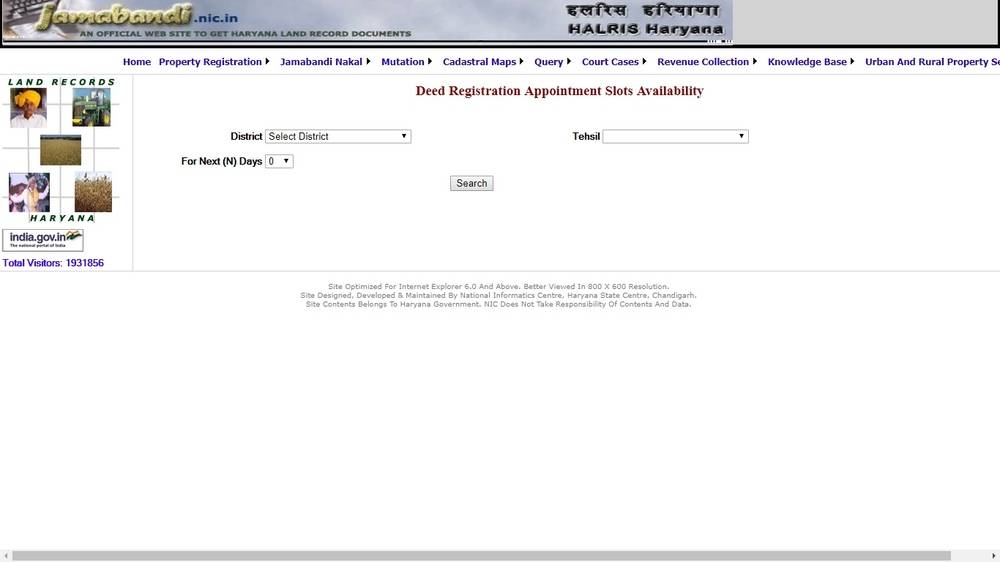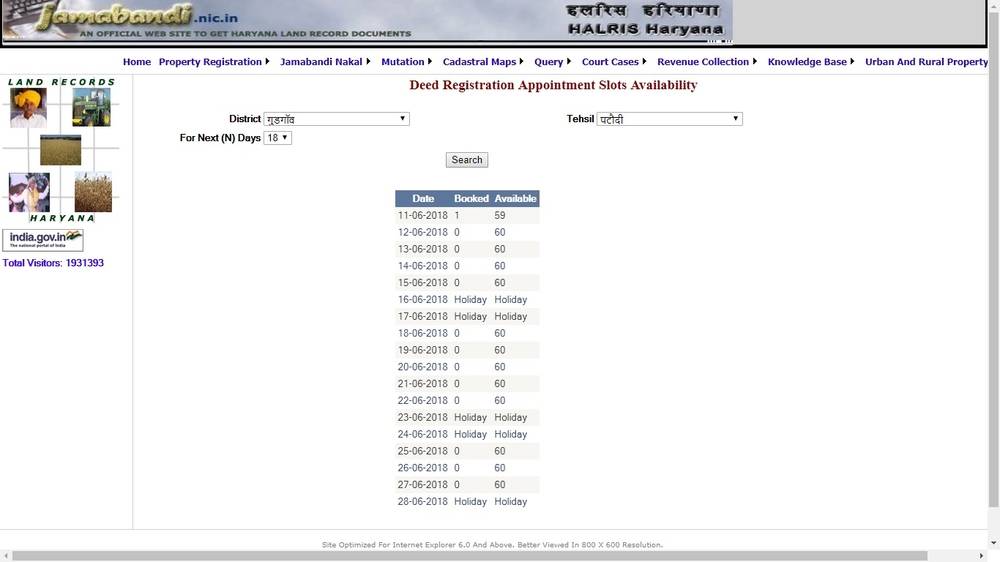 Last updated: February 8th, 2020 3:24 PM
Last updated: February 8th, 2020 3:24 PM
Haryana Property Registration
All transactions that involve the sale of immovable property should be registered in India to ensure the transfer of clean title to the owner. The registration of a property consists of the preparation of documents and paying the applicable stamp duty registration charges for the sale deed to be legally recorded at the Sub-registrar’s office. In this article, we look at the procedure for Haryana property registration with stamp duty charges.Purpose of Property Registration (Deed Registration)
Transfer of immovable property can only be effected by way of registration. Registration of a document of transfer of immovable property provides the following benefits:- By registering property, the document of transfer will be a permanent public record
- Any person can inspect a public record, and a certified copy can be obtained from the office of Sub-Registrar
- Registration of a document is giving information to the general public that the owner has transferred the immovable property to the buyer.
- If a person plans to buy an immovable property, he can verify the record-index available in the Sub-Registrar office. He can verify in whose name the last transfer deed has been registered.
Documents Required for Property Registration
For registering property, the following documents must be submitted to the Registrar.- Proof of ownership
- Certified copy of original old sale deed or assessment of MC or Mutation
- Proof of identification
- Ration Card, Voter ID, Driving License, Aadhaar Card, PAN Card or Identity Card
- Verification of GPA from where it has been registered in case it has been registered out of state only
- NOC
- ID Proof of two witness parties
- Map plan and description of immovable property
- Digital photograph of property (building or plot)
- In the case of release deed: Mutation of virasat for identification of the ancestral property.
Stamp Duty in Haryana
Stamp duty is a legal tax payable in full and acts as a proof for any sale or purchase of a property. Rates of stamp duty of various transactions in Haryana are tabulated here:|
Transaction |
Rate of stamp duty | |
| Rural area |
Urban area |
|
|
Conveyance Deed, Sale Deed or Certificate of Sale. |
5% |
7% (Including 2% of Municipality duty 2% exemption of S.D. on instruments of sale executed in favour of women in rural or urban) |
|
Gift Deed, Mortgage Deed with Possession |
3% | 5% |
|
Mortgage Deed without Possession, Settlement Deed, Partition Deed |
1.5% |
1.5% |
|
Special Power of Attorney |
Rs. 100 |
Rs. 100 |
| General Power of Attorney | Rs. 300 |
Rs. 300 |
|
Exchange of Property |
5% |
7% |
|
Affidavit |
Rs. 10 |
Rs. 10 |
|
Security Bond, Release of Ancestral, Property, Surrender of the lease. |
Rs. 15 |
Rs. 15 |
|
Partnership Deed |
Rs. 22.5 |
Rs. 22.5 |
|
Trust Deed |
Rs. 45 |
Rs. 45 |
|
Adoption Deed |
Rs. 37.50 |
Rs. 37.50 |
|
Equitable Mortgage or deposit of title deed, pawn or pledge |
0.2445% if such loan is repayable on demand or in more than three months. 0.12225% if such loan is repayable in not more than three months. | |
Calculate Stamp Duty on Jamabandi
The user can calculate stamp duty for a property transaction on the Jamabandi website by following the steps below: Step 1: To view the applicable stamp duties visit the stamp duty page of Jamabandi web portal Image 1 Haryana Property Registration
Step 2: Enter transaction value in rupee
Step 3: The user has to select municipality and gender
Step 4: Then click on calculate. Amount of stamp duty and registration fee will be shown.
Image 1 Haryana Property Registration
Step 2: Enter transaction value in rupee
Step 3: The user has to select municipality and gender
Step 4: Then click on calculate. Amount of stamp duty and registration fee will be shown.
 Image 2 Haryana Property Registration
Image 2 Haryana Property Registration
Procure E-Stamp Online
After viewing the applicable fee, the user needs to procure an E-Stamp online for registration. Visit e-Gras web portal. Login into the portal and make the necessary steps to obtain E-Stamp. Image 3 Haryana Property Registration
Image 3 Haryana Property Registration
Deed Registration Appointment Slots Availability Checking
The need to take an e-appointment before registration of property. Step 1: To check available slots for an appointment, visit the Jamabandi portal. Image 4 Haryana Property Registration
Step 2: The user has to select the district name, Tehsil and enter the date.
Step 3: Now available slots will be displayed
Image 4 Haryana Property Registration
Step 2: The user has to select the district name, Tehsil and enter the date.
Step 3: Now available slots will be displayed
 Image 5 Haryana Property Registration
Step 4: The user can now make e- appointments for registration. At the time of appointment, the E-Stamp details are to be entered on the appointment slip.
After taking the e-appointment, the user can visit the sub Tehsil office or the SRO office with the required documents listed above.aa
Image 5 Haryana Property Registration
Step 4: The user can now make e- appointments for registration. At the time of appointment, the E-Stamp details are to be entered on the appointment slip.
After taking the e-appointment, the user can visit the sub Tehsil office or the SRO office with the required documents listed above.aa
Procedure for Registering a Deed
Haryana property deed registration guidelines are provided below: Step 1: Visit the Jamabandi website to download the desired deed. Sample Copy of the sale deed is here. Step 2: Fill all details in the deed. Note: The deeds are available in both format PDF and Word. The word format can be edited on a computer. Deeds in PDF format can be printed, and necessary fields can be filled. Registered deed writers can also prepare deeds in respective Tehsil. Step 3: Visit the Sub Registrar office on the requisite date and time. Registration clerk forwards deeds to Sub-Registrar. Step 4: Once the Sub-Registrar marked the deed, it will be fetched into the HARIS and deed data, and the photograph of the buyer will be recorded in the system. HALRIS- Haryana Land Record Integrated System where the database of land records for the entire state of Haryana is maintained. Once the deeds are registered, the entries are mapped HALRIS. Step 5: While Registering in HARIS, the desk officer will update the seller or buyer details and the E- Stamp number to update the transaction fees. Once the details are entered, the real-time photograph is captured. Step6: Once the deed is registered in HARIS, the SRO officer will regularize the deed by obtaining the Biometrics of the buyer and seller. Step 7: After regularizing the deed, the registry of the land is printed with pictures of the seller, buyer, and witnesses along with signatures. Step 8: The registered copy of the deed is provided to the parties, and the Tehsil office also uploads the same on the Jamabandi web portal.View Registered Deed
Step 9: The user can view the registered deed online by visiting the Jamabandi website. Step 10: Go to the Jamabandi Web portal. Select “view registered deed” option from the drop-down menu under the property registration menu. Image 6 Haryana Property Registration
Step 11: The user has to enter the following details.
Image 6 Haryana Property Registration
Step 11: The user has to enter the following details.
- Tehsil
- Registry number
- Registry date
- Deed name
Popular Post

In the digital age, the convenience of accessing important documents online has become a necessity...

The Atalji Janasnehi Kendra Project that has been launched by the Government of Karnataka...

The Indian Divorce Act governs divorce among the Christian couples in India. Divorce...

When an individual has more than a single PAN card, it may lead to that person being heavily penalised, or worse,...

Employees Provident Fund (PF) is social security and savings scheme for employee in India. Employers engaged...


